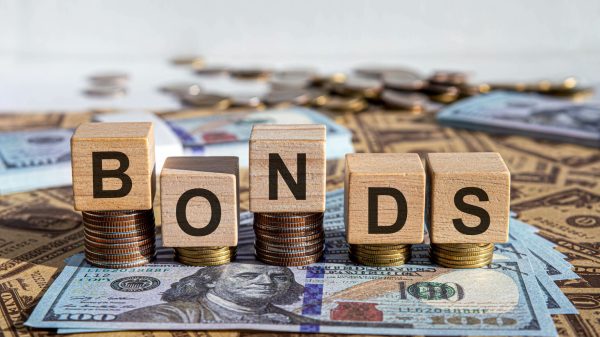Misery may love company, but it’s bad for your investment health.
The company part is easy to prove. Just look at the Cure, those 1980s-era musical purveyors of doom and gloom who recently finished up a very profitable summer tour. While it might not have been Taylor Swiftian in its success, it showed there is still demand for songs about emptiness and ennui. Still, even Robert Smith, the band’s singer and main songwriter, knows there is a time for “Doing the Unstuck”—a song featuring the refrain “Let’s get happy!”—even if it leads to puzzled looks.
This columnist, too, can get, well, stuck thinking about what can go wrong for the markets—and the world. When stocks are falling, as they were last year, it’s easy to remain tied to a bearish position despite signs of a turn, or to dismiss a gain as nothing more than a bear-market rally. There are so many risks these days—from bank failures, an aggressive Federal Reserve, and still-too-high inflation to geopolitical tensions with China, war in Europe, and catastrophic weather—that we want to apply for membership among the esteemed permabears of the world.
It certainly felt that way this past week, one that included Moody’s taking issue with the finances of U.S. banks, the imposition of U.S. restrictions on money heading to China, and a swoon in
Nvidia
(ticker: NVDA) and other highflying tech stocks. What’s more, every gain, like the one that initially occurred following this past Wednesday’s better-than-expected 3.2% rise in the consumer price index, was met by willing sellers. It felt like a moment to turn up the volume on the Cure’s “Disintegration,” and wallow in the hopelessness of it all.
And there’s evidence to suggest that many investors are feeling the same way, despite the bounce in indexes like the American Association of Individual Investors sentiment survey, which shows 45% of investors labeling themselves as bullish. Savita Subramanian, head of U.S. equity and quantitative strategy at
BofA
Securities, notes that the bank’s clients are still focused on what could go wrong, including consumers finally capitulating in the face of higher interest rates, tighter lending standards undermining economic growth, and a low
Cboe Volatility Index,
or VIX, that could rise sharply.
“Sentiment has shifted from abject fear and loathing to something a bit warmer,” she writes. “But skepticism reigns.”
And that’s a problem. Persistent gloom is a lousy way to make money in the stock market, at least in the U.S. Take the
SPDR S&P 500
exchange-traded fund (ticker: SPY), among the simplest ways to invest in the benchmark index. While last year’s 18% decline was painful, for investors who take a longer-term perspective, it was just a bump in the road. The ETF has posted remarkably consistent returns, whether it’s the 12% annual return over the past three years, the 12% over the past 10 years, or the 16.5% in 2023.
None of this means being a Pollyanna. Markets are about pricing risk, and sometimes risks get mispriced. And since markets are ever in flux, active investors should always be thinking about what can go wrong, when to take profits, and when it’s time to re-engage. Investors didn’t have to realize that August—one of the toughest months for stocks—was commencing to know that stocks like Nvidia and
Palantir Technologies
(PLTR) were looking stretched and that a pullback could be in order.
There are always ways to mitigate the risk we worry about. Take the low VIX that has some investors worried. BofA’s Subramanian notes that the so-called fear index isn’t mean-reverting, a way of saying that what goes down doesn’t have to go up. While the index ticked has ticked up to 14.84 this week from 13.63 at the end of July, it remains well below where it was in March.
Using the slope of the yield curve as her guide, Subramanian expects a trough in the VIX no earlier than the first quarter of 2024. Those worried about a resurgence of volatility, however, have a choice, as well. “Timing is tricky, so to hedge against an earlier VIX spike, we like high-quality stocks,” she writes.
The
iShares MSCI USA Quality Factor
ETF (QUAL) and the
Invesco S&P 500 Quality
ETF (SPHQ) both offer a solid path to get exposure to quality stocks.
If the tech boom that has carried the market higher this year really is ending, investors might want to consider looking at growth at a reasonable price, or GARP. Jefferies strategist Desh Peramunetilleke notes that switching to value probably doesn’t make sense just yet, but buying stocks that are cheap based on their growth and have earnings momentum does.
Stocks that have those qualities have many of the same qualities as the Big Tech names that have driven the market higher, but they come with a much lower price tag that could help them weather the pressure on valuation. GARP stocks highlighted by Jefferies include banking giant
JPMorgan Chase
(JPM), cybersecurity firm
Palo Alto Networks
(PANW),
Delta Air Lines
(DAL),
W.W. Grainger
(GWW),
Alphabet
(GOOGL), and Vulcan Materials (VMC).
GARP might not be as fashionable as goth, but for investors, it could be a whole lot more profitable.
Write to Ben Levisohn at [email protected]
Read the full article here









